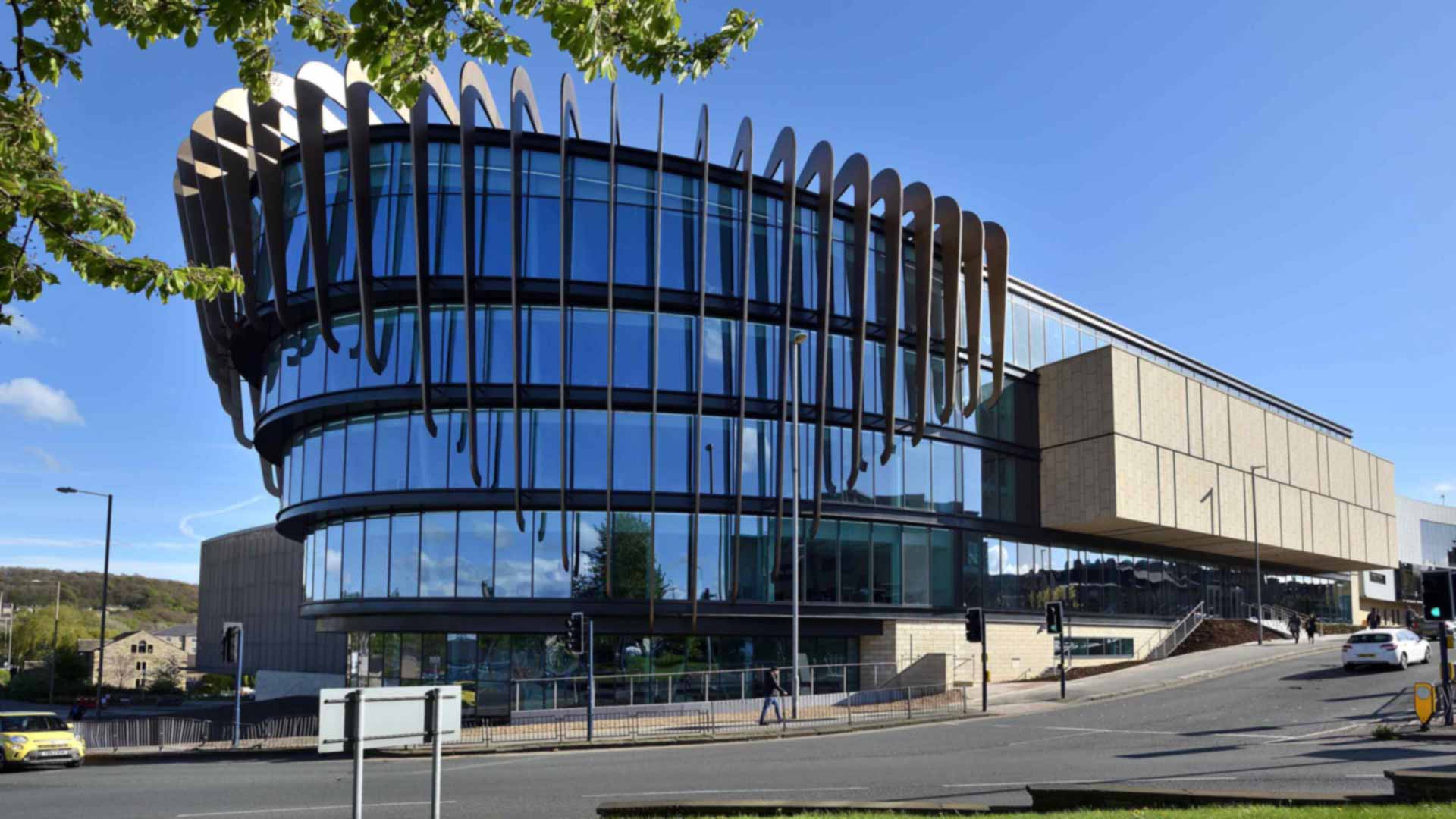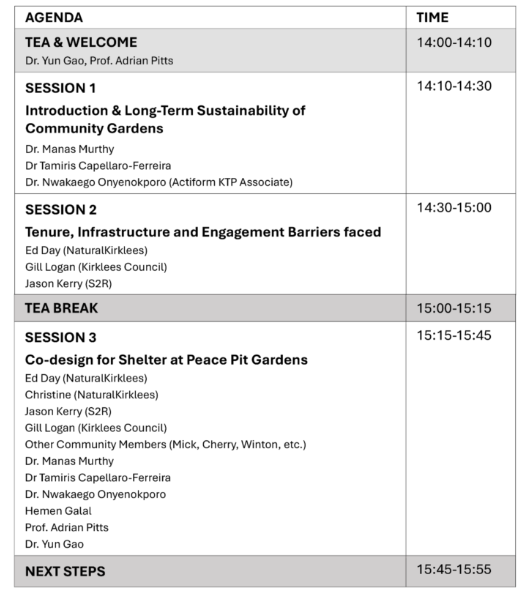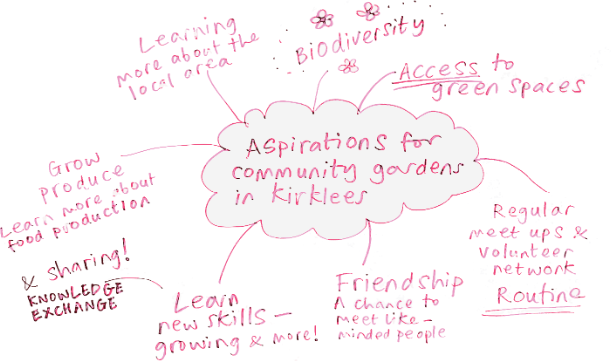
Addressing Barriers to the Long-Term Sustainability of Community Gardens
On the 18th of June 2025, SLRC organised an engagement workshop and design charrette with members of local growing groups to collectively assess the current state of community gardens across Kirklees Council, and the various ways in which conditions may be improved.
Agenda for the workshop that took place on the 18th of June 2025

The workshop was facilitated by SLRC’s technical team including Dr. Yun Gao, Dr. Manas Murthy, Hemen Galal, and attended by other members of the research team including Prof. Adrian Pitts, Dr. Tamiris Ferreira and Dr. Nwakaego Onyenokporo. The schedule for the workshop was as follows:
The session included a Mentimeter exercise which asked participants to envision the future of community gardens over differing timescales, and the present barriers that exist. The following points summarise the discussions during the workshop:
- Aspirations: Increase community gardens, foster social interaction, improve health and wellbeing, and enhance the natural environment.
- Short-term Goals (3-6 months): Install community shelters, attract volunteers, encourage more group participation, raising the profile so that more people know they exist, finalise planting schedules for next year.
- Medium-term Goals (1-2 years): Identify new locations, establish community gardens as valuable, and create permanent support structures across local government and policy.
- Long-term Goals (5-10 years): Formalize community gardens' roles, secure funding, and promote awareness as valuable social resources, expand opening hours for greater accessibility across age groups, make gardens walking destinations.
University's Role: Monitor environmental impact, attract volunteers, and support coordination efforts

The aspirations for community gardens in Kirklees focus on increasing community support and interaction, ensuring access for all, and enhancing health and wellbeing. The goal is to improve the natural environment while providing a valuable social resource that fosters friendship and collaboration among community members. Short-term objectives include installing a community shelter, attracting more volunteers, and encouraging group participation to enhance facilities. In the medium term, there is a desire to establish community gardens as treasured sites in the community, expand their facilities and educational possibilities, while long-term goals aim to formalize the role of community gardens and secure modest funding for their sustainability.
Barriers to the long-term sustainability of several growing spaces include access issues, funding challenges, and the need for dedicated volunteers and community involvement. However, there are opportunities for educational engagement and creating a peaceful environment that can benefit the community. Overall, the vision is to create a thriving network of community gardens that contribute positively to the local area and its residents.